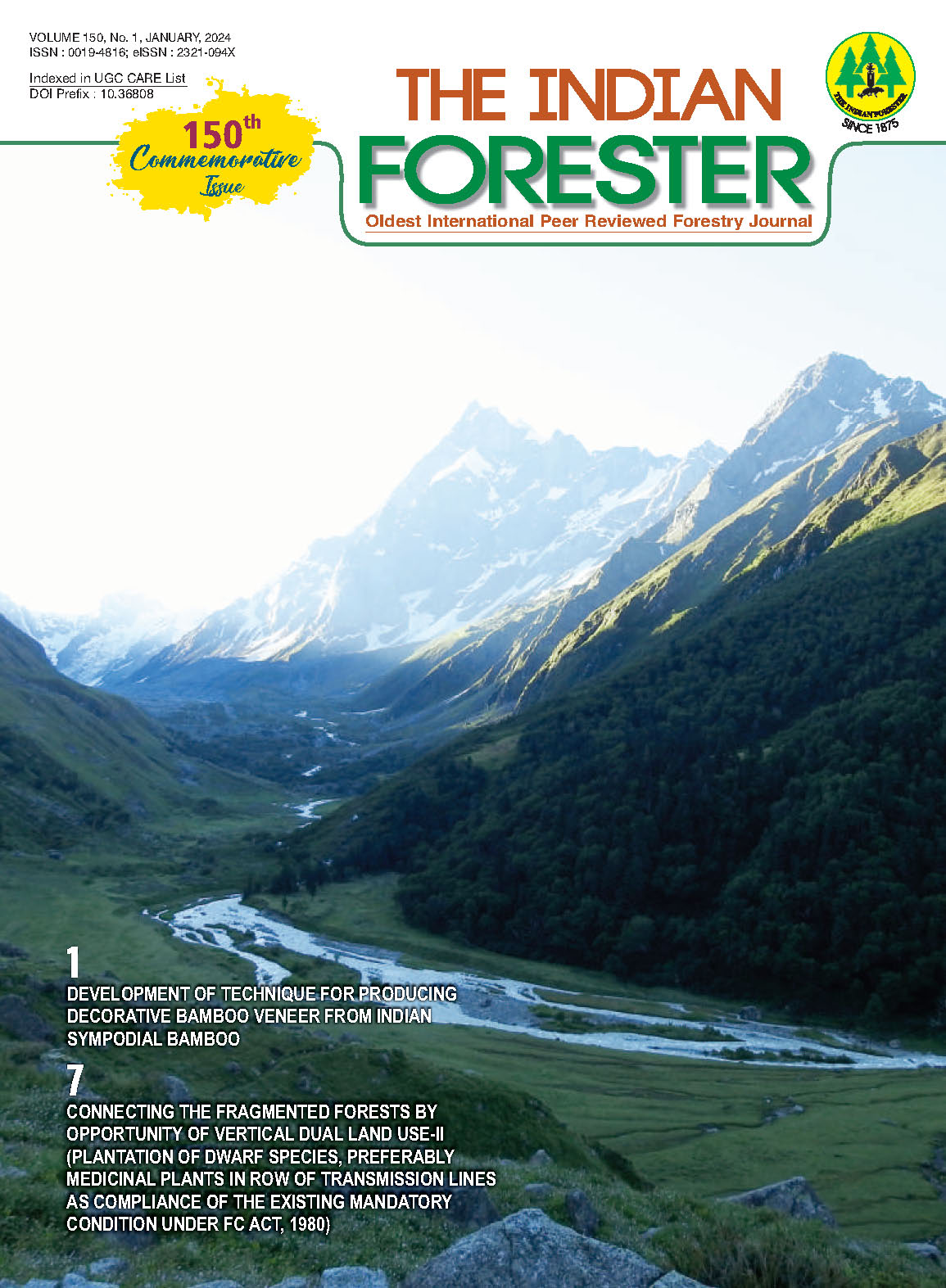Development of Technique for Producing Decorative Bamboo Veneer from Indian Sympodial Bamboo
DOI:
https://doi.org/10.36808/if/2024/v150i1/169751Keywords:
Decorative, Veneer, Panel, Bamboo, Glulam.Abstract
Decorative panel industry in the country is currently facing tough situation of severe shortage of decorative face veneers. The present study focusses on to find out alternate methods of making face veneers by utilizing Indian sympodial bamboo to meet the challenges posed by the shortage of face quality veneers as it is very much necessary for continuing the production of panel in the industry without disruption. Bambusa tulda and Bambusa nutans were used for the study. Melamine formaldehyde (MF) resin was used for making Glulam of size 1000 mm(l) x 120 mm(w) x 180 mm(t). Bamboo veneer of 0.3 mm thick were developed using these flitches. The decorative bamboo veneer were matched to a size of 1000 mm x 1000 mm and overlaid on Plywood panels to produce decorative panels. The resulting Bamboo veneer is a consistent in colour and pattern. Testing's were carried out on overlaid plywood as per specifications for veneered decorative plywood. It has been observed that the quality of veneer produced is satisfactory and meets requirements as per IS: 1328 – 1996 and can be used for producing sliced bamboo decorative veneers.References
Anon. (2014). Bamboo Green Construction Material, Asia Pacific Network for Global Change research. https://www.devalt.org/images/L2_ProjectPdfs/Resource_Efficiency_Publications_Catalogue_DA.pdf
Indian Standard specification IS1328 (1996). “Veneered decorative Plywoodâ€
Jain S., Kumar R. and Jundal U.C. (1992). Mechanical behavior of bamboo and bamboo composite. J. Mater. Sci., 27(17): 4598–4604.
Li Y., Du C., Liu Z., Lin Y. and Zhang Y. (2003). Production technology and development prospect of sliced bamboo fine line veneer. China Forest Prod. Ind., 30(3): 36–38.
Liu Z., Li Y., Du C. and Weng G. (2003). A study on production technology of sliced bamboo veneer. J. Zhejiang Forestry Coll., 20(3): 227–231.
Uday D.N., Mamatha B.S., Sujatha D. (2012). Development of technique for production of face veneers from reconstituted Plantation Timbers IPIRTI Research Report No 163.
Uday D.N., Prakash V., Mamatha B.S., Sujatha D., Anand N. and Pradeep K. (2019), Development of bamboo veneer from Indian sympodial bamboo IPIRTI Research Report No 217.
Yanjun Li., Yucheng Shen., Siqun Wang., Chungui Du., Yan Wu. and Gouying Hu. (2012), A Dry–Wet Process to Manufacture Sliced Bamboo Veneer. Forest Products J., 62(5): 395-399.
Downloads
Downloads
Published
How to Cite
Issue
Section
License
Unless otherwise stated, copyright or similar rights in all materials presented on the site, including graphical images, are owned by Indian Forester.





